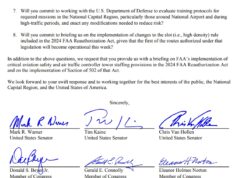SPONSORED CONTENT
Self-driving cars promise to remove many of the human-related risks associated with driving. An AI driver has faster reaction times, improved sensory capabilities, and many other enhancements beyond human capabilities.
However, self-driving AI is not superior to human drivers in every aspect. Safety advocates are growing increasingly concerned over the ability of safe-driving cars to recognize when accidents occur. If a self-driving car is involved in a collision, will it react appropriately?
The Different Classifications of Self-Driving Vehicles
Not all self-driving vehicles have the same capabilities. They are often informally categorized into five different levels:
- Level 1 – No driver assistance technology
- Level 2 and 3 – The vehicle is semi-autonomous with automated Advanced Driver-Assistance Systems (ADAS)
- Level 4 and 5 – The cars can drive, at least in some respects, without the need for human involvement
A Level 5 vehicle is considered a true self-driving car, requiring no human co-pilot. While this type of car does not exist today, it is the ultimate goal for manufacturers. Currently, the most automated option available is Level 4, which has only recently begun trials on public roadways.
Potential Collision Detection Issues
With a Level 2 or 3 car, the human driver remains in charge at all times. While the car’s guidance systems provide assistance, the driver is ultimately responsible for all movement on the road. If an accident occurs, the only way the vehicle will continue to move forward is if the driver purposefully attempts to drive.
However, that is not necessarily the case with a Level 4 vehicle. The car’s detection capabilities are directed by AI systems. Sensors along the exterior of the car activate when a collision occurs. Interestingly, conventional cars are already lined with collision sensors, used to deploy the car’s airbags.
Unfortunately, the systems do not always work as intended. Blind spots, sensor failures, and other malfunctions can occur. If there is a sensor failure along the side of a vehicle, it might keep going after sideswiping an object. Even worse, a sensor failure in the front of the vehicle could result in the car running over an animal or person without stopping.
How Self-Driving Cameras Can Prevent Accidents
In theory, the sensor technology exists so that a self-driving car can detect any type of collision. However, adding that technology effectively, and cost-effectively, is a different story. Manufacturers are still refining a self-driving car’s ability to safely navigate between two locations. Implementing enhanced safety systems is considered a long-tail goal.
For example, should a self-driving car send out a warning if it believes a collision is imminent? On the one hand, the human driver might be able to brace themselves for impact. However, they might also attempt to quickly gain control of the vehicle to avoid the crash.With so little warning, their efforts might do more harm than good.
Conversely, if the passenger in a Level 5 self-driving car believes an accident is about to occur, and they yell out a verbal alarm, should the vehicle take evasive action?
“Currently, the AI system can be considered the legal driver of the car,” said Lawyer Maxwell Paderewski of Lone Star Injury Attorneys. “They’re not designed to respond to any verbal input from occupants. But considering that a person and an AI system perceive the world around them in different ways, it might not make sense to limit human involvement if an accident is about to happen.”
Seeking Legal Help After a Self-Driving Car Accident
Human drivers generally know when an accident has occurred. They are able to stop the vehicle and assess it for damage. However, self-driving cars currently do not have this same ability. Even if a collision is detected, the system might not have the capacity to evaluate any damage.
While the future of travel will undoubtedly involve self-driving cars, their operational specifics remain uncertain. Even with complex safety systems in place, self-driving cars will likely always require an attentive, responsible driver ready to take the wheel if necessary.





![Rep. Don Beyer (D-VA08) on “reports of the devastating effects Donald Trump’s Project 2025 agenda would have on [Metro]”](https://bluevirginia.us/wp-content/uploads/2024/10/trumpmetro-238x178.jpg)









